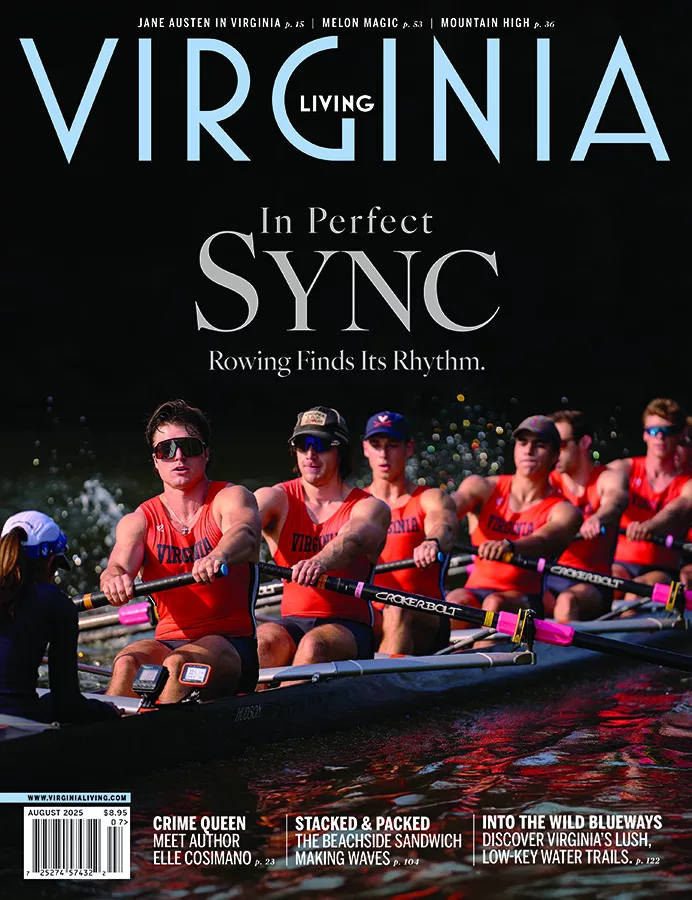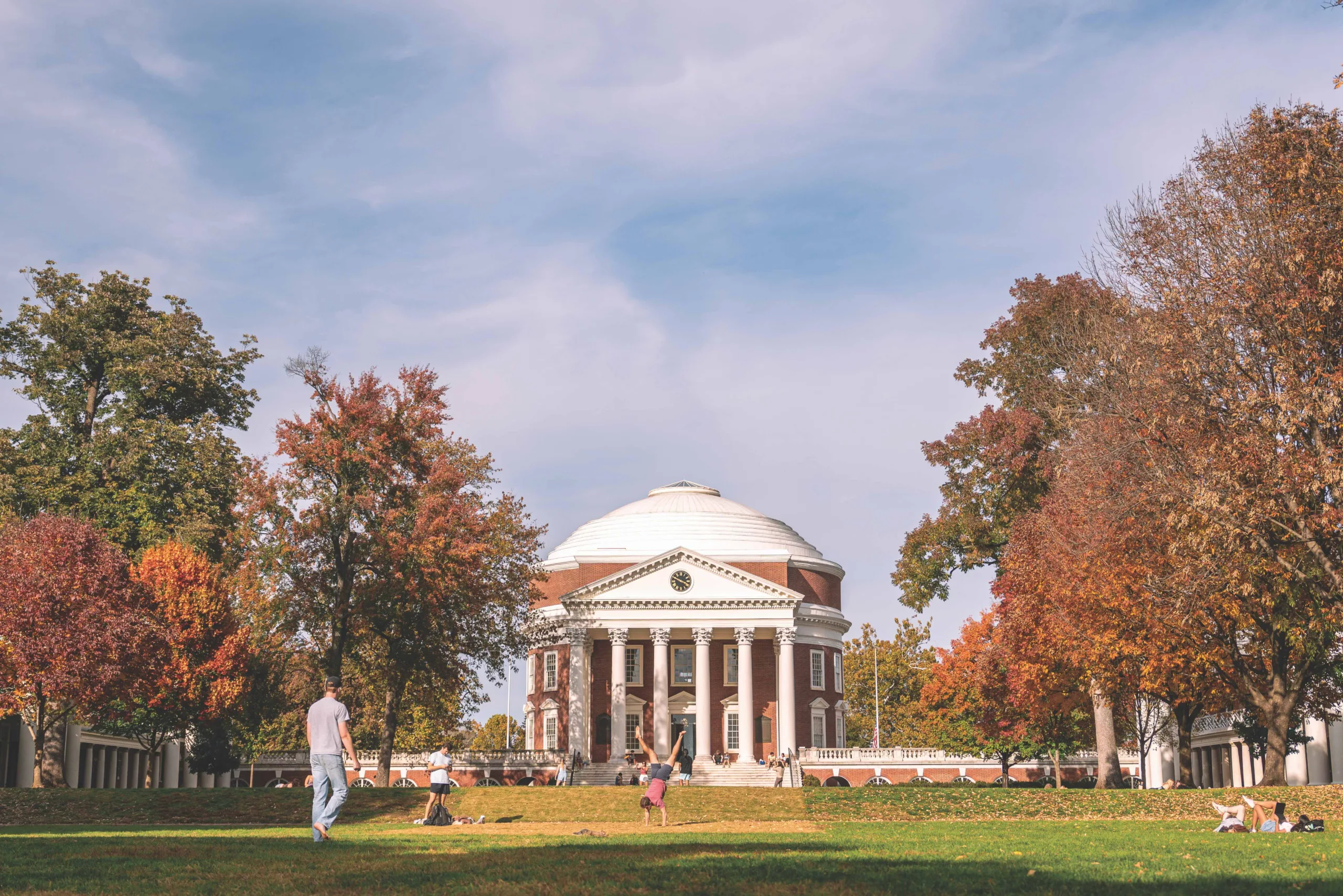Is that a belted kingfisher or an American oystercatcher? Take a trip with the Virginia Society of Ornithologists and you’ll see winged creatures in a different light.

birding
Illustration by Chris White
The scene: a Sunday morning in Assateague. A group of 12 people have alighted in a parking lot at the head of the Woodland Trail, part of the Chincoteague National Wildlife Refuge. They are members of the Virginia Society of Ornithologists (VSO), which was founded in 1929 and whose current mission is “to encourage the systematic study of birds, to stimulate interest in birds and to assist in the conservation of wildlife.” The VSO, which has about 850 members, organizes four major birding trips in Virginia every year, and one of them is always to Chincoteague and Assateague, where members eye coastal birds hanging out in the refuge’s marshes, mudflats and woods.
A wildlife refuge is, of course, an excellent place to spot birds at almost any time—and a September scouting trip can be especially rewarding. It’s a migratory month, a time when birds from the north make their annual flights south to warmer climes in central America, South America and the Caribbean. (Birds are smart, too.)
I’m a birding novice. I couldn’t distinguish a tufted titmouse from a pine warbler if they each perched in my hand. Expert birders can identify scores of different species, from impressive distances, and rather quickly. I was curious to watch them work and to take a peek at the culture of birding.
Bill Akers and Jerry Via, who led the Woodland Trail hike, are ornithological experts—and good company, besides. Akers, a husky, quick-witted pharmaceutical rep, has been studying birds for nearly 40 years. A Blacksburg resident, Akers describes our morning jaunt, with a chuckle, as the “Red Cross walk.” If you’ve ever spent time in a wildlife refuge, you’ll know why—the skeeters are thick. Via, his birding partner on this day, is a genial naturalist and biology professor at Virginia Tech. He has taught tropical ornithology in the Dominican Republic and seems to know as much about butterflies and wildflowers as about birds.
Before Akers, Via and I get the car parked, a knot of khaki-attired birders in our group are peering into the woods with their binoculars. Some have their spotting scopes at the ready, should a bird settle on a tree limb. All have their birding guide books—Sibley’s is a popular choice—in their pockets. Akers strolls over to check things out. There are little creatures flitting about in the mottled sunlight 20 yards away, but, to me, the birds are all vague apparitions in shades of brown amid the leaves and tree branches.
Akers, on the other hand, seems to have X-ray vision. Before even coming to a halt, he’s rattling off bird names with alacrity. “There’s a chickadee running up that limb,” he says with nod. “There’s a black-throated blue warbler—still in good plumage.” (I nod knowingly—yes, the plumage is impressive, if only I could find it … and the bird.) Akers: “There’s a pine warbler.” After detecting a chirp in the woods, Akers says to one of the group,
“I hear your red-eyed vireo.”
Sondra Winstead, a member of the group, suddenly exults: She has spotted a yellow-billed cuckoo. This creates a frisson of excitement. I realize that one of the fascinating things about birds is their names—so descriptive, melodious and, sometimes, regal: The great crested flycatcher, the red-breasted nuthatch, the ruby-throated hummingbird, the indigo bunting, the double-crested cormorant, the yellow-rumped warbler and more.
Binoculars up, we scan the forest deep. Unfortunately, the cuckoo is sitting behind a cluster of leaves in the distance and hard for anyone to spot. No matter: “There’s a lot of things jumping around,” says Akers with a satisfied smile.
People become birders for different reasons. Some individuals just enjoy getting outside and gradually become enthralled by the beauty and incredible diversity of birds. Others take up birding to satisfy a competitive urge. They tend to be “listers”—people who are motivated to spot and record as many species as they can. The late Phoebe Snetsinger, author of Birding on Borrowed Time, was both; she started birding at age 34, then became almost obsessive, traveling the world in an apparent quest to see every species. Over time she saw, and identified, more than 8,000 species before dying in a traffic accident in Madagascar.
Some people have a scientific interest in birds—their behavior, their nesting and migratory habits, their populations. Ruth Beck, an expert birder and leader of another of our Chincoteague shore-bird expeditions, is one such person. Beck, who just retired after a long career as a biology professor at William and Mary, has spent years counting birds on some of Virginia’s barrier islands. She’s been working recently with state and federal officials to thin a massive population of laughing gulls nesting at the Hampton Roads Bridge Tunnel—7,000 pair of them. The birds have caused several traffic accidents. The U.S. Dept. of Agriculture tried to scare off the birds with gunfire, but that didn’t work, so Beck and others began oiling the eggs, which prevents the embryos from hatching. That method has been successful—reducing the population by 1,000 pair. Beck calls this “the challenge of my career.”
The day before, Beck had given me my first basic lessons in birding, as she led a seven-car caravan that surveyed the wildlife on Assateague’s mudflats and marshlands. The first thing we saw was a cattle egret perched atop a wild pony, and Beck took the opportunity to quickly list a few differences among a cattle egret, great egret and snowy egret—the last with its wonderful yellow feet, or “golden slippers,” as one person in our group called them. Within minutes, scanning a mudflat just off the road, we saw a dozen or more species—a flock of skimmers, four or five varieties of tern, a short-billed dowitcher, laughing gulls, semipalmated sandpipers, semipalmated plovers and the American oystercatcher, with its distinctive orange beak.
Beck, who has been birding for nearly 40 years, acted like the professor she’s been for so long—knowledgeable, patient and entertaining. To pick out birds, she advised, first know what type of habitat you (and the birds) are in; then determine the size of the bird, its colors, its behavior and the sounds it makes. She cautioned, “You only get the guide book out after you’ve seen the bird!”
As we surveyed the feeding area, Beck suddenly announced, “There’s a tern coming by. Note the rapid wing beat and the head looking down.” During the morning she would explain, in detail, the differences among royal, Caspian, common, Forster’s and Sandwich terns. (Of the Sandwich, she quipped, “It’s not a BLT.”) “Listen,” Beck said at one point, “the melodious call—riiichht, riiicht—of the great blue heron.”
After two hours of birding, we visited the Tom’s Cove Visitor Center, the last stop on our trip. Beck handed out Tootsie Pops to everybody in the group—it’s a VSO tradition. She also gave birder George Alaeas a prize—a pack of suet (with dehydrated insects that warblers like to eat)—for being an “excellent” spotter and someone who was happy to share his scope. Moments later, we got a report that Stephen Eccles, in a different VSO group, had spotted a Franklin’s gull nearby. It was a rare find—a vagrant from the West—and Beck and her cousin, Mary Penyack, who’d been assisting Beck, went over to take a look.
Whatever the motivation, says Peggy Opengari, the VSO field trip co-chair, a birder needs sharp observational skills. “Keen eyesight and hearing are important,” she says, “and both of those abilities start to [recede] as you get older, which unfortunately is when a lot of people start birding!” Learning to identify bird sounds and calls also helps—you’ll see more birds. Opengari recently returned from a birding trip to Borneo, where she and her group saw great hornbills flying over mist-covered mountains. She’s been birding seriously since the 1970s. Her husband has been birding since he was 12. He’s now 72.
Robert Ake, a retired chemistry professor at Old Dominion University and former VSO president, is a bird lister. “I have a year list, a state list, a state-year list, a yard list, a world list,” says Ake, who lives in Norfolk. “A new bird warms the cockles of my heart.” Over the years, he has spotted 399 species in Virginia, and he says the one-year species record is 345.
Every serious birder in the state will try, at some point, to spot 300 in a year, according to Ake. How hard is that to achieve? “You’d have to go out every weekend somewhere, and you’d have to be in specific places at specific times [to see specific birds]. And you have to be willing to chase the unusual birds. Essentially, you have no life.” For that reason, most birders do it once and never again.
Because he’s a lister, Ake is also a “chaser.” Like all veteran birders, he gets excited about the possibility of spotting a rare or unusual species. “If I hear about a rare bird somewhere, I might hop on a plane and go try to see it, or hop in a car and drive all night,” he says. “You have to make up your mind to go and take your knocks if you don’t see the bird, knowing there will be another day.” Fifteen years ago, Ake heard that an Allen’s hummingbird had been spotted in Bristol. The Allen’s is a western bird—finding it on the east coast is highly unusual. Ake drove to Bristol alone, saw the bird at a feeder at somebody’s house, then turned around and drove home.
David Spears, the VSO president, had said prior to the trip that Virginia is an “incredible” state for birding. One reason is that Virginia has a variety of habitats, ranging from coastal areas to high-elevation mountains. Another reason, he said, is that most of the state’s coastal areas are preserved. “Our barrier islands are completely pristine, unlike Maryland, Delaware or North Carolina. We have the longest stretch of untarnished coastline on the Atlantic Coast.”
Back at the Woodland Trail parking lot, the action has intensified. As we circle the lot, somebody spots a golden winged warbler, prompting several “ooohs” and “aahhs.” This is a good spot, as birders say. “I think we’ve hit the jackpot!” says Winstead. Jerry Via points out an eastern wood-pewee. The bird is petite but acting like a beast—it’s got an (innocent!) swallowtail butterfly in its beak, and is repeatedly whacking the victim against a tree branch, literally beating the wings off the butterfly so that it can be more easily eaten. We find another yellow-billed cuckoo, and a VSO member gets it in his scope. This is when birding is a treat—the bird’s coloring is vivid.
After a productive hour in the parking lot, we finally move along the trail deeper into the forest. Oddly, the sightings cease. Via starts making bird sounds—“psssp, psssp”—hoping to attract a curious bird or two. No luck. The naturalist keeps things interesting, pointing out some wildflowers (blue curl, boneset), some sassafras, a member of the tropical laurel family (birds love the berries) as well as a few butterflies—a monarch, a cloudless sulphur and a beautiful red-spotted purple. It’s nature in its glory. Akers spots an immature bald eagle circling high off in the distance—“I know it’s immature because it’s sticking its tongue out at us.” Via hands out Tootsie Pops, and we amble back to the cars.
On Saturday night, the VSO group gathers at the hotel for “the tally.” Akers starts calling out a long list of bird species, one by one. “White pelican?” Silence. “Brown pelican?” “Yes!” “How many?” And so on. Individuals who alone have seen a species are queried about where they saw the bird. Rough estimates of the number of birds of each species spotted are recorded. It’s all a bit inexact, but the data is still valuable. In the end, Akers, Via and Beck tell me the group spotted about 115 species. That’s lower than normal for Chincoteague during the migratory season—the VSO usually spots 130 to 150 species—but dry conditions reduced the number of warbler and sparrow sightings. No matter: It’s been an informative and entertaining couple of days.
VSO president Spears had told me that “birders are almost universally great people to hang out with. The experts help the novices, and the novices ask questions that make the experts feel like they know something. They are all good people.” He was right about that, and I went home with a deeper appreciation for both birds and bird watchers.









